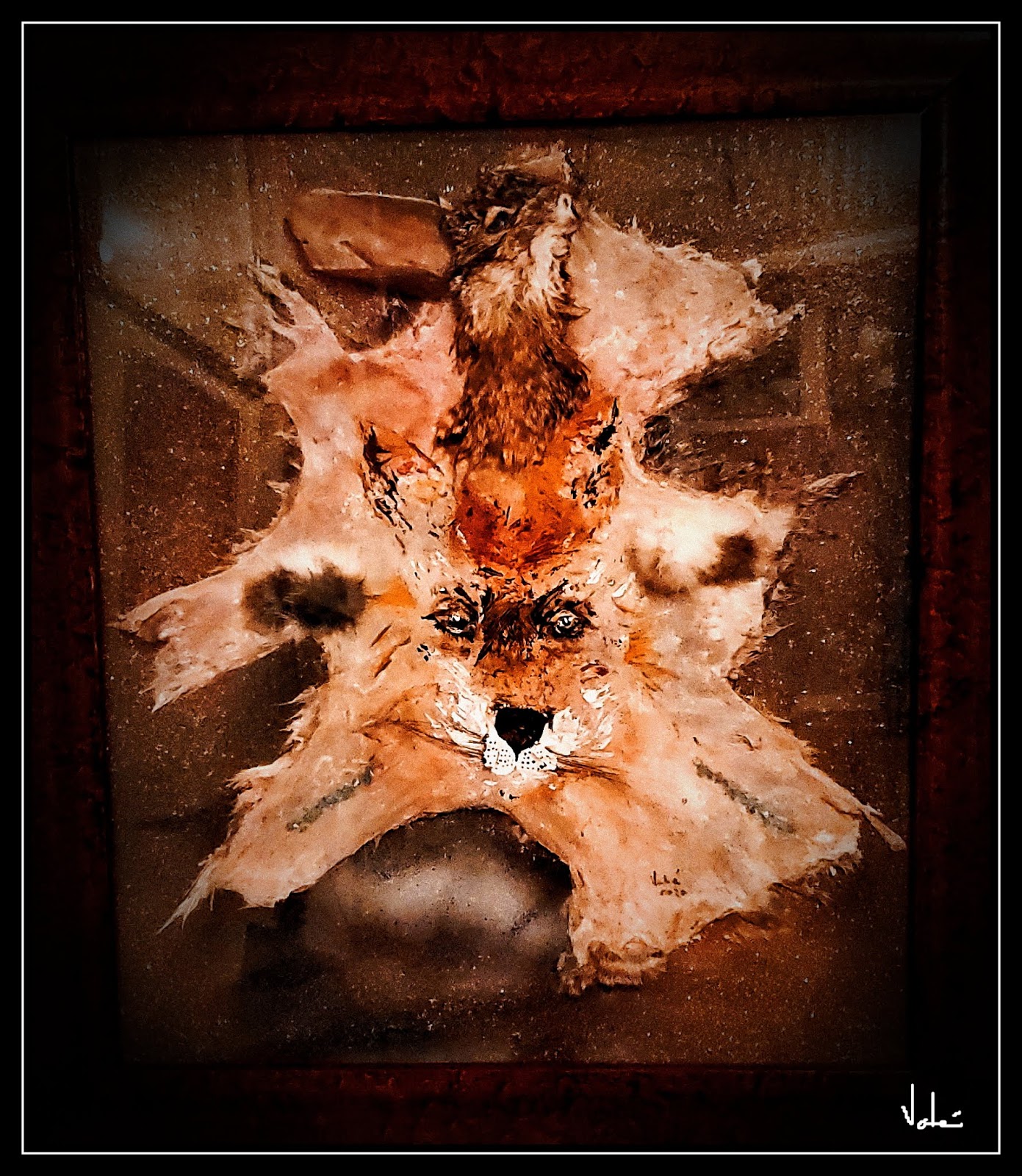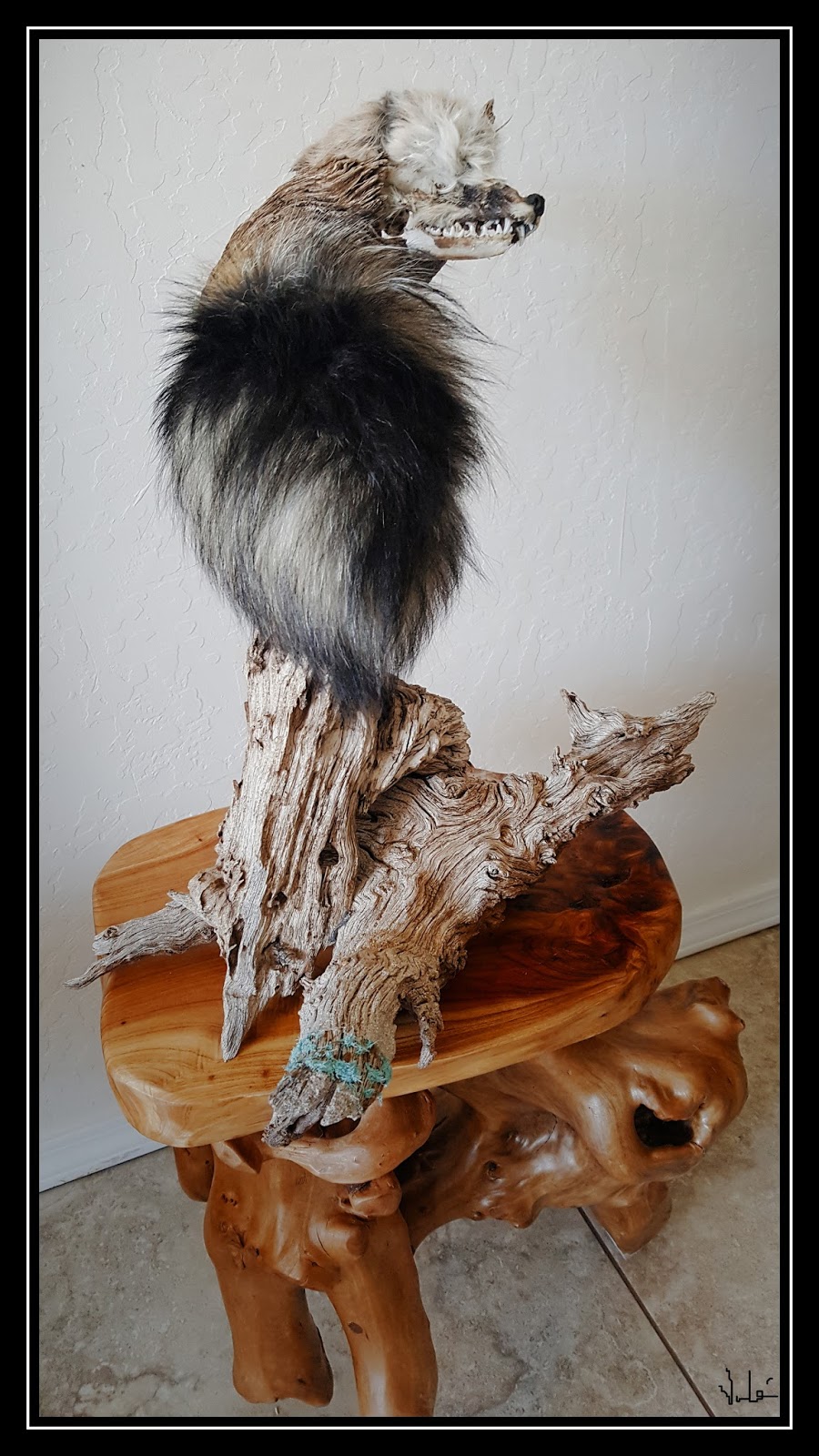Jackalope -- the Mystical Animal of the American SouthWest
Every artist incorporates the origins of myth in a new work.
Even a photographer tries to find an angle, a depth of field, a blurred and
shady composition that transforms a two-dimensional print into something else.
A visual myth.
… I was at a pawn shop, where I often find unusual articles,
and noticed European deer antlers and the skull bone holding them. I knew these
were Roe deer (Roebuck) antlers
perhaps from the UK or France where there are called chevreuil.
I decided to create my own version of the mythical Jackalope
a creature looking like a jackrabbit (hare) but sporting antelope-like antlers.
In other words it is a rabbit with horns, and this mythical animal has been
reported in one context or another since antiquity. It even had a taxonomical Latin
name Lepus cornutus (or Lièvre cornu in French.)
The most recent revitalization of the Jackalope came in the
early 1930s when Douglass Herrick, of Douglas Wyoming put deer antlers on a
taxidermied jackrabbit and sold it to the local hotel. The Jackalope was born
and thousands were made over the next decades to adorn the walls of bars,
lobbies of Western hotels and sometimes the homes of those who needed a visual
assist while telling an incredulous story I like the history behind the
jackalope, but as a healthcare professional, I also like the delightful input
of wild rabbits and jackrabbits into medical research in the past century.
Indeed, in 1933 Richard Edwin Shope, a virologist at the Rockefeller
Institute was researching the cause of keratinous carcinoma that resemble horns
growing on cottontail and brush rabbits, black tail jackrabbit in the US and among some European
wild rabbits. Shope, who had identified the
Influenzavirus A in pigs in 1931, discovered the papillomaviruses as
responsible for neoplasm. This discovery
of animal papillomaviruses led Herald zur Hausen to publish a hypothesis in
1975 that papillomavirus had a causative role in the aethiology of human
cervical cancer. Further research confirmed this hypothesis and Herald zur
Hausen received the Nobel Prize in Physiology and Medicine in 2008.
So there is a major contribution of the jackrabbit to human
welfare. But the Shope discovery also suggests that in previous centuries, when
viruses and carcinoma were not known as such, those keratinous growths on the
jackrabbit were surely observed and interpreted as horn.
Hence the birth of a myth that had its roots in actual
reality.
Ok, so I decided to cut the Roebuck antlers away from the
skull bone, make small anchoring tips at the bottom of the antler crown and
insert them into the skin of a jackrabbit head once I finish preparing one.
The cut antlers look like this:
I prepared the jackrabbit head using my favorite traditional
Skin & Stuff taxidermy method after salting the hide for a month and
rehydrating it for reshaping. I do not use toxic chemicals nor do I do tanning.
The stuffing material I use (contrary to the historical dry grass or hay) is
polyester fiber made for stuffing pillows.
The first stage of the “design” looked like this:
I opted for blue glass cateyes to give the Jackalope more
character:
And fitted it with actual jackrabbit front teeth!
I like working with Paulownia tree wood as it has the
brightness of Aspen tree sapwood but it is soft for carving or other artwork.
To make it more Southwestern, I cut two Arizona Abert squirrel hide and tails in the shape of a spear or
arrow, and placed a few delicate hawk feathers at the tip. Then, used a
horseshoe I found in the desert to complete the Western context. Of course that
can never be done without the inclusion of turquoise stones to also match the
colour of the mystic animal’s eyes!
So, when in Rome …
But wait. The founding of Rome is the greatest myth in human
history. Twin brothers, Romulus and Remus were abandoned by their parents Rhea
Silvia and Mars, the Roman god of war. But they were to survive as a she-wolf
let them suckle wolf milk, and a woodpecker (!) fed the twins solid food. Voilà, they founded Rome and the rest is
history.
So, while myths are born out of reality (keratinous horn-like
grows DO exist on jackrabbits), reality can also be born out of myth, such as
Rome.
For now, I completed the transformation of a Jackalope avatar
(descent in Sanskrit).
Will see what else I can find in that pawn shop…
PS/ Talking about milk, the Jackalope milk is said to be an
amazing aphrodisiac. However, since the beast sprints at 40 miles per hour and
jumps as high as 6 feet, I think that milking a Jackalope is the most
formidable challenge for getting a natural aphrodisiac from these "horny rabbits"!
PS2/ Actually there is a video documentary about the Jackalope that is well made. See it here: https://www.youtube.com/watch?v=rIPkUospl94
PS2/ Actually there is a video documentary about the Jackalope that is well made. See it here: https://www.youtube.com/watch?v=rIPkUospl94
January 19, 2020
© Vahé A. Kazandjian, 2020









Comments
Post a Comment